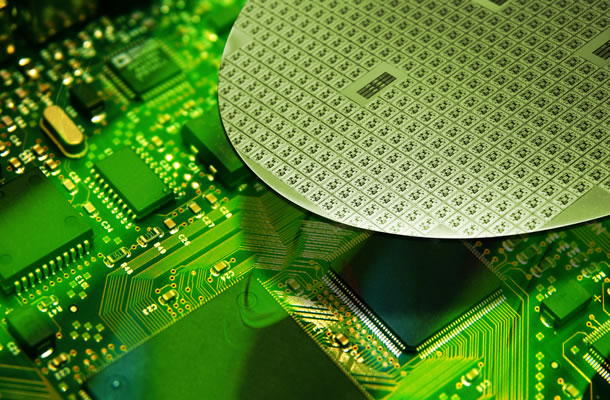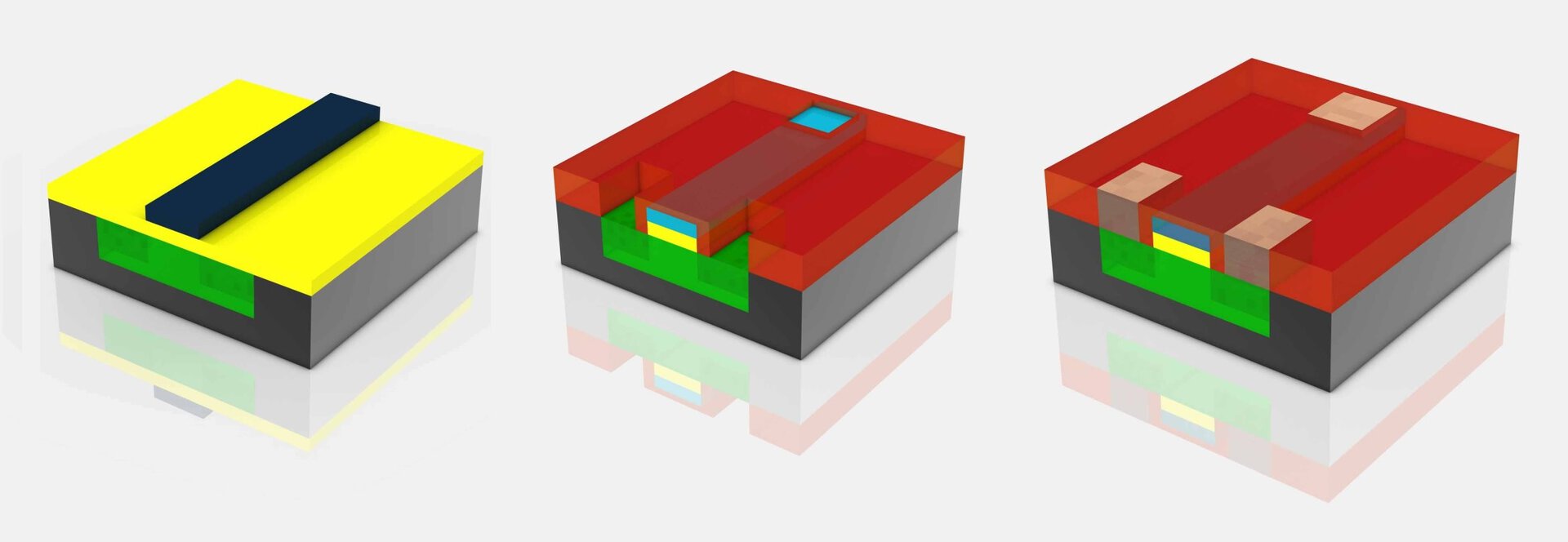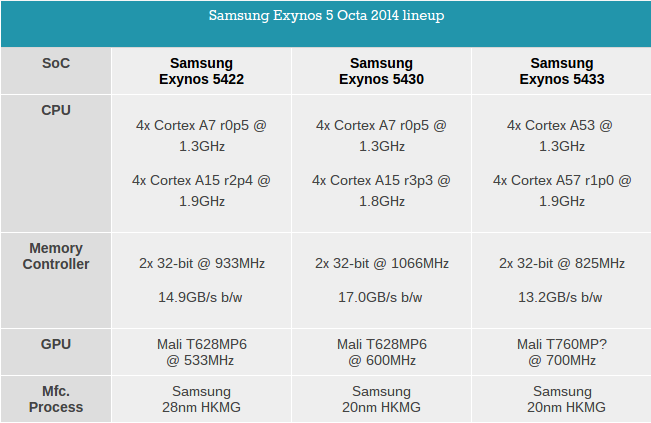Affiliate links on Android Authority may earn us a commission. Learn more.
Nanometers race: past and future of mobile SoC manufacturing processes
Published onDecember 12, 2014

Recent processor talk has centered around the latest batch of ARMv8 powered chips heading our way next year, higher clock speeds, energy efficient big.LITTLE designs, and new GPU advancements. But one area that we’ve discussed less recently is the size of our mobile processors and how that impacts on energy efficiency.
While not a hugely decisive factor in the way an SoC works, smaller and more efficient nodes can help squeeze out some extra battery life and make chips cheaper to purchase. A lot is set to happening in the chip fabricating space over the coming years, so here’s a look at what to keep an eye out for.
What do we mean by fabrication process?
Before we delve any further into where mobile processors have come from and where they are likely heading next, here’s a quick recap of exactly what we mean by a process technology. Essentially, the fabrication process refers to how the chip is built, at what size and using what techniques.
When talking about fabrication and processor sizes you will nearly always see the abbreviation nm (nanometer). In this case this number refers to the size of the individual transistors inside the CPU or GPU. The general rule of thumb is that smaller transistor sizes are more energy efficiency as there is less distance for the electronics to travel between transistors. They are also cheaper to produce, once yields are high enough, as each chip requires less silicon. However, differently designed processors can out or under-perform others chips with different transistor sizes, so this is far from the only thing to consider.

As for how the manufacturing technique works, the silicon wafer is first doped, given different conductive properties, and then transistors are gradually printed up through the application of microscopic dielectric (insulating) layers along with a photo resistive layer, which creates the pattern for the chip. The non-photo resistive parts (mask) are removed via ultra violet light passed through a lens, which pinpoints the light to a high level of accuracy.
Accurate doping, lithography, or printing, and de-masking of the chip are essential as sizes become smaller. This is where new technological breakthroughs may be needed to reach even smaller, more efficient processors.
History of mobile chip sizes
Mobile chips have shrunk substantially since the early days of Android. The HTCDream, also known as the T-Mobile G1, featured a 65 nm Qualcomm MSM7201A, which clocked in at just 528 MHz, back in 2008. Other early Texas Instruments powered Android phones, such as the Motorola Droid, and the Snapdragon S1 (QSD8250) powered HTCNexus One were built on 65nm fabrication techniques.

Nvidia’s Tegra 2 broke away with a 40nm offering in early 2010, with Qualcomm’s Snapdragon S2 and Samsung’s first mobile Exynos chip following with almost equally small 45nm chip designs in the same year.
This isn’t to say that mobile SoC development has always shrunk between generations. NVIDIA’s Tegra 3 still made use of 40nm production techniques at a time when Samsung had moved onto 32nm with its Exynos 4212, and both Samsung and Qualcomm were soon to be releasing 28nm chips in mid-2012.

Since then, Qualcomm’s Snapdragon series and NVIDIA’s Tegra have remained on a 28nm fabrication process, including the latest Snapdragon 805 and Tegra K1 SoCs, marking a two year slowdown in mobile processor manufacturing advancements. Samsung has managed to edge out in front slightly here, as its latest Exynos 5430 and 5433, found inside the Galaxy Alpha and Note 4, have recently hit the 20nm mark, which Samsung developed at its own foundries. Intel was previously ahead in this field, as its Bay Trail chips are built at 22nm.
What to expect from 2015
Despite mobile chips staying the same size recently, we have still seen some improvements in performance. The new line-up of 64-bit ARM Cortex-A57 and A-53 processors arriving next year will see future devices take bigger steps forward in performance and energy efficiency. Firstly because the new ARM core designs are improved all-round and secondly because Qualcomm and Samsung will both be producing these chips at 20nm.
TSMC will be providing Qualcomm’s Snapdragon 808 and 810 SoCs, which are destined for flagship smartphones and tablets next year. Samsung’s own Exynos 7410 will continue to use a 20nm process into 2015 just like the Exynos 5430 and 5433. MediaTek’s latest processors will all remain on 28nm, although the company is expected to announce a 20nm mobile product something next year.

16nm will also be a big talking point next year, as TSMC races to be one of the first big mobile chip manufacturers to make it to this milestone. TSMC’s 16FinFET process could enter volume production sometime in early 2015, although it will probably take a year until hardware actually ships to market, meaning that 16nm could show up at the end of 2015 or early 2016.
Intel and Samsung are planning similar production capabilities at 14nm. Samsung teamed up with GlobalFoundries this year to deploy 14nm production, and has recently announced that production has begun on some unspecified 14nm chips. However, smartphones or tablets products powered by a 14nm Samsung manufactured chip likely won’t appear before the end of 2015. Intel has its 14nm Cherryview and Broxton platforms planned for 2015 and beyond, although no products featuring these chips have been announced yet.

TSMC gunning for 7nm
Of course, the race won’t be stopping at 14/16nm, all of the big companies are already eyeing up 10nm and lower. ARM and TSMC have already partnered up to work on 10nm technologies into 2016. Following Intel, TSMC is also said to be aiming towards 7nm production in the not too distant future. According to ASML NV, Europe’s largest maker of chip-production equipment, TSMC plans to acquire two extreme ultraviolet (EUV) scanners next year, which is likely to be used to improved lithography accuracy for smaller nodes.
Although the scanners are designed for 10nm, the technology could be scaled for smaller production methods. TSMC may be able to start production of 7nm chips as early as 2018. Intel, the world’s largest chipmaker, has already stated that is has found a way to reach 7nm without EUV.
Bottom line, 20nm could well see a much shorter lifespan than its 28nm predecessor, but it will likely be the staple size for mobile processors next year.